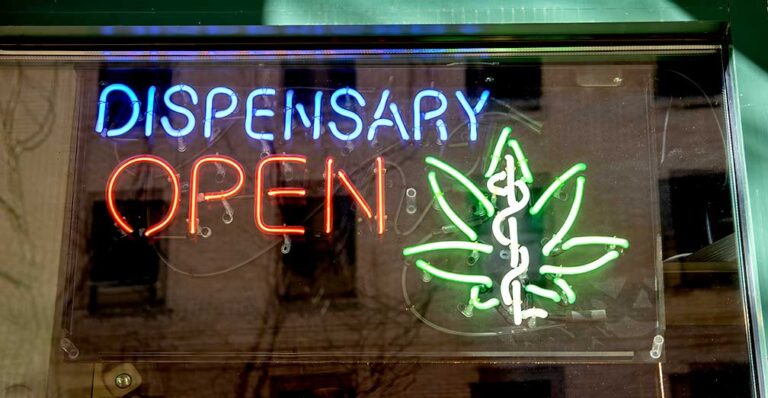Let’s cut to the chase. I make my living out of defending truck drivers — and while speeding tickets can negatively affect a driver’s career, things like DUIs are career-enders.
Now, even though I’ve built my career defending truck drivers, it doesn’t mean I don’t want to see drivers who put other motorists in danger held accountable. Just the opposite in fact. However, if we’re going to end someone’s career, we’d better make sure we’re doing so justly and that we’re minimizing human biases and assumptions.
Even in cases where the driver is accused of driving under the influence of alcohol, the situation is not necessarily as clear-cut as you’d think.
Field sobriety tests, which are designed to measure the level of alcohol influence on a subject, still rely on human observation. And human observation can be affected by bias or inadequate training on interpreting results. Additionally, there are many variables at roadside that can unfairly impact the outcome of the test.
Despite all this, alcohol is the drug we feel most confident measuring for driving impairment.
The question of cannabis
With that in mind, how in the world are we supposed to respond to the sweeping state legalization and decriminalization of cannabis?
While the federal government’s stance on cannabis hasn’t changed, many states have legalized cannabis in some form, and the way Americans view cannabis has changed substantially. This is especially for younger people who came of age around people who treat cannabis like my generation would treat alcohol, or even caffeine. When you’ve grown up seeing both coffee shops and cannabis shops on every corner, the social stigma of cannabis use really goes away.
And to be honest, folks, the tide isn’t reversing!
In conservative states where legislators are not changing the laws, the people are putting it on the ballot. There are only 4 states left in which cannabis in any form is fully illegal. And frankly, even citizens in the states still toeing the federal line commonly visit neighboring states to sample these products.
When you add in the fact that truck drivers are naturally in a mobile, often interstate job, it’s basically irrelevant where your drivers call “home.” Drivers can readily pick up lotions and oils with THC (sometimes even by mistake).
I know, I know … they were just in the wrong place at the wrong time, with no idea a drug was potentially entering their system. However, some of these excuses are ringing truer than they ever have before.
Determining level of impairment
So, you ask, how do we as an industry respond to this cultural phenomenon?
I often attend conferences or visit clients who have become some of my closest friends over the years. While I go because I enjoy maintaining these relationships, it’s also important to me that I stay connected to the carriers’ perspective on industry challenges.
For years now, even though cannabis is still federally illegal, carriers have been expressing how challenging it is to navigate this societal contradiction. There are so many questions.
For carriers that perform new hire hair follicle drug testing, do you still test for THC?
If an employee used cannabis in some form prior to hire, how do you weigh that in your hiring decision?
How much does cannabis influence driving ability, and how do you measure it?
Let’s say a driver fails a post-accident drug test for THC, which is certainly bad. How do you know if the driver was actually impaired by cannabis the time of the accident?
I am no scientist. However, I am, and have always been, very curious. And when I want to learn about something I don’t really understand, I am not opposed to reaching out to people who are way smarter than me (about 98.2% of the population falls into this category).
So, that’s exactly what I did. I became convinced there had to be a better way to determine if a driver is impaired.
Because that is the fundamental question. Regardless of the substance or reason, shouldn’t our most basic question be whether a driver is impaired at a particular point in time? “Surely somebody must be looking at it from this perspective,” I thought.
So, I began my online research. And lo and behold, just a little to the north of us, the Canadians have been grappling with similar challenges on how to measure cannabis impairment — including how it relates to driving.
In looking for new solutions for this growing challenge, I came across a cognitive research-based company focusing on measuring driving impairment: Impirica. Because I have never been shy, I reached out to them, and they were gracious enough to talk to me. Multiple times (a decision I am sure they regret). Through our conversations, I have learned quite a bit about the nuances in cannabis impairment.
Simply stated, THC absolutely impairs the cognitive functions critical for safe driving. The time that the body metabolizes the negative influence of THC is between two and six hours post consumption. This is the window where an impairing “high” is experienced.
Unlike alcohol, which is water soluble and metabolizes in a linear way in the body, cannabis is fat-soluble, so it attaches to body fat, which means a completely variable metabolism rate. In layman’s terms, this means that body composition can heavily impact how impaired a person becomes. Skinny folks and “husky” folks like me can be impacted differently.
Also, impairment varies based on whether you smoke cannabis or eat a gel capsule, because they are absorbed into the body differently. All these variables mean that the amount of cannabis ingested does not necessarily predict impairment.
Testing for THC impairment
So, how do we presently test for cannabis impairment? The two primary approaches are behavior based (think field sobriety test or test conducted by a “DRE”) and biology based.
The biology-based test measures the concentration of THC in a driver’s blood. Three states have laws saying that anything greater than 0ng/ml shows impairment. Four states have limits of 5ng/ml, while 10 other states use a positive metabolite test.
In other words, there is no standard biology-based test to determine actual impairment resulting from cannabis use.
To add another layer of complexity, testing for the presence of THC doesn’t necessarily predict impairment either, for a few reasons.
Due to the variables mentioned before, some people may have a higher “tolerance” for cannabis than others (I suspect Willie — that’s Nelson to those of you not “in the know” — may have a higher tolerance than most folks).
If you’re looking at body fluid from a traditional drug and alcohol test, the only way you to determine recent use is with a saliva swab (or cannabis breathalyzer) that picks up impairing THC residue in the mouth, so you can infer impairment based on that two- to six-hour window. If you look at blood and/or urine you will detect carboxy or hydroxy-THC, which is a metabolite and has NOT been linked to impairment. Metabolites could be present several weeks after use. This means someone could have smoked a week ago and be well out of a state of impairment, but they would still fail these drug tests.
So, we ask again, how DO we test for cannabis impairment? And this is where I think we get stuck and lose sight of the ultimate goal.
What are we really trying to prevent — drug use or impaired driving?
As I mentioned earlier, I think we’ve gotten so focused on identifying the source of the impairment that we’ve gotten away from the fundamental question determining fitness for duty: Is this person impaired?
“Okay Brad,” you say. “So, how do you measure impairment then?”
First, let’s define what we are trying to measure. Impairment is when an individual loses their functional ability to operate safely within a given environment. The three key functions to drive safely are:
- Motor skills (muscular skeletal)
- Sensory (eyesight/hearing)
- Cognitive (judgement/reaction time/etc.)
This means that if we can measure an individual’s motor skills, sensory abilities and cognitive abilities as it relates to driving, we can determine whether they can safely operate a motor vehicle, regardless of whether the cause is cannabis, alcohol, sleep deprivation, cognitive decline or any other cause.
Based on my conversation with the folks at Impirica, it appears they have done just that.
They’ve developed impairment testing that’s modeled against the data of more than 200,000 real-world driver assessments and have scientifically validated their solution through collaborative studies with Colorado and Canadian universities. Their research has been heavily peer-reviewed, as they have been researching and developing in this space for over 30 years. As impairment testing pioneers, they have engaged with government task forces in Colorado and Canada who are grappling with the same questions we’ve been discussing.
Driver-specific screen
With specific reference to transportation, Impirica has a cognitive screen that actively measures a driver’s risk of impairment. The screen has been designed and validated to engage the brain in the same way it would be during driving, and it provides a predictive measurement of driving risk.
While this cognitive screen has been scientifically validated to measure impairment risk associated with the use of cannabis, the screen itself is cause-agnostic, meaning it focuses less on the cause of impairment and more on whether the driver is fit for duty. Thus, it has application beyond cannabis use and addresses a multitude of factors that could render a driver impaired.
Perhaps most fascinating, at least to me, is that Impirica’s solutions are currently in active use. They have transportation clients actively using their product, in addition to clients in the health care and workplace safety industries. In workplace safety, this type of testing easily becomes a proactive prevention of workman’s compensation claims. Warehouse and maintenance workers can be tested as part of the sign-in process for each shift. Impirica has also worked with law enforcement to enhance the SFST (standardized field sobriety testing) process and support more accurate and complete data at roadside.
To further complicate the issue …
While the U.S. Department of Justice has announced that the Attorney General has initiated the process to consider moving cannabis from a Schedule I to a Schedule III drug, Pete Buttigieg, U.S. Secretary of Transportation, says cannabis would still be fully prohibited for truck drivers.
However, if the proposed schedule change goes through, it’s likely pharmaceutical companies will begin to include THC derived from cannabis in new medications. In this case, drivers could theoretically receive prescriptions containing THC from their doctors that they pick up at Walgreens or CVS.
If we’re going to reconcile the differences in how cannabis is regulated for our industry versus how our future driving candidates view cannabis, we’re going to have to provide an innovative solution from the industry.
At the end of the day, I am not a scientist or cognitive researcher. Hell, I don’t even play one on TV.
However, I have been a “successful” attorney and business owner in the transportation industry for decades. I have been proud of how we adapt to significant changes in regulations and continue to embrace innovations that make our roads safer.
However, as recreational/medical cannabis use continues to expand, we as an industry have struggled to adapt how we screen new and current drivers.
How can we truly feel confident we are not putting impaired drivers behind the wheel? How can we know if cannabis is actually the cause of an accident when the driver may have smoked over a week ago? How can we know before he or she crashes if our driver picked up a prescription with THC from the pharmacy and is impaired?
We need to think outside the box and embrace a test that can accurately determine impairment. To that end, I applaud the folks at Impirica and others who are working to make this happen.
Brad Klepper is a regular contributor to The Trucker, providing valuable information for drivers and motor carriers. He is also president of Interstate Trucker Ltd., a law firm entirely dedicated to legal defense of the nation’s commercial drivers. Brad is also president of Driver’s Legal Plan, which allows member drivers access to his firm’s services at discounted rates.













Transportation officials are making a serious mistake with potentially deadly consequences by re scheduling the Indica and cannabis drugs. Basically an engineered narcotic the potency of todays Indica variety of cannabis can be 100 times or more of the natural plant of the 1960 s weed. Commercial drivers ,at the very least should be prevented from driving while using as they would with a narcotic substance where the driver legally has to inform the company of the perscription and refrain from driving while using . Hence schedule one , leave it or suffer the results.
More deaths have a occurred from alcohol use than Marijuana use my father died from alcoholism my self I quit 36 years ago I’ve known more people who are matinance drinkers and have to to stabilize there actions than Marijuana matinace users who physical need to to stabilize there actions as far as Pete b he is another puppet looking for some one to pull his strings and recieve a pay check for nothing living of the tax payers dollars